Tan-awan is a sleepy town a short drive from Cebu City on the Philippine island of Cebu. With a population of just over 900 it has, until recently, been of little note to anyone. That is until recently when local fishermen have been hand feeding every divers dream date… the whaleshark.
In February Jason Isley and Roger Munns visited Tan-awan to capture HD underwater footage and take underwater photos of this spectacular interaction between the fishermen and the largest fish in the sea, the whaleshark (Rhincodon typus) or butanding as they are locally known.
Having read various online reports we didn’t quite know what to expect when we arrived but everything soon became clear. In the early hours of the morning, before the sun has risen, the fishermen head out into the Cebu Strait with powerful lights to gather small shrimp. After a successful trip they return to shore where it’s soon time to start the main activity for the day. At dawn they paddle out about 100m from the shore and begin looking for whalesharks. Once they’ve spotted a shark they begin to feed it small handfuls of shrimp which the shark wolfs up hungrily.

At this point tourists begin their experience. Every visitor must purchase a ticket from the counter in a space off the beach which has become the main access point (300PHP at the time of writing) which entitles the buyer to 30mins on a boat in the whaleshark area. On top of that there is a charge for underwater cameras of 100PHP. Income is shared between the fishermen, staff and local municipality. There follows a short briefing on safety and how to interact with the whalesharks and then the tourists embark their small outrigger (bangka) which ferries them out to the feeding area. These boats hold between 1-10 people. Many tourists choose simply to watch from the boat while some swim in lifejackets and others are equipped with fins and snorkeling gear. Guided groups of divers also enter from the beach or dive boats (moored outside the area) and swim to the whaleshark zone.
The feeders paddle their boats around at about the same speed as a snorkeler with fins on can swim at. By dropping small amounts of shrimp into the water they lead the whalesharks around in a slow procession up and down in front of the tourist boats. It’s a delicate procedure and if they paddle too fast or don’t give enough food then the shark will lose interest and turn away. At that point another feeder might take up the work or the original feeder will paddle like mad to get back in front and start again. Sometimes the feeders can moor up on a line and get the whaleshark to feed in a vertical stationary position which looks amazing and makes the encounters easier to manage.
The whole process sounds organised, and in theory it is. The reality though is that on the days that we went out there were sometimes over 50 people in boats or in the water snorkeling and 20 or more underwater on SCUBA. Including the feeders there are often 20 boats in an area the size of a couple of tennis courts and things can get messy.
The biggest danger is a bang on the head from one of the many boats in the water. Divers surface randomly and snorkelers swim around with that tunnel vision that excited camera-wielding nature lovers seem to get as they go looking for their next Facebook profile picture. They have little regard for other people, the wooden boats or indeed the sharks themselves. The feeders do their best to regulate the proceedings and will shout at people or even bat at them with paddles to move them away from their boat but it’s a losing battle.
There are of course much bigger social, economic and environmental issues at stake here than simple diver and snorkeler safety. For example: are the whalesharks being hit and hurt by the boats? Will hand feeding change the natural habits of these migrant animals? Should tourist numbers be limited to reduce stress on the animals? What is a reasonable amount to charge for an interaction?etc etc
Tan-awan is only two hours drive from Cebu City which has direct flight connections to many major international SE Asian airports (Hong Kong, Kuala Lumpur, Tokyo etc). So while this interaction is not unique, it is uniquely accessible. Right now the word has spread within the online dive community but it will only be a matter of time before more mainstream tourists become aware of this amazing opportunity to see the largest fish in the ocean up-close-and-personal. There could soon be literally thousands of people turning up on weekends looking to encounter these gentle giants. There needs to be some forethought and planning into what comes next for Tan-awan and its sharks.
If you’d like to license underwater and topside High Definition (HD) footage of fishermen hand-feeding whalesharks in Tan-awan, Oslob please contact our stock footage library manager by clicking here
To license photographs of fishermen hand-feeding whalesharks in Tan-awan, Oslob please contact Scubazoo’s stock photo library manager by clicking here


